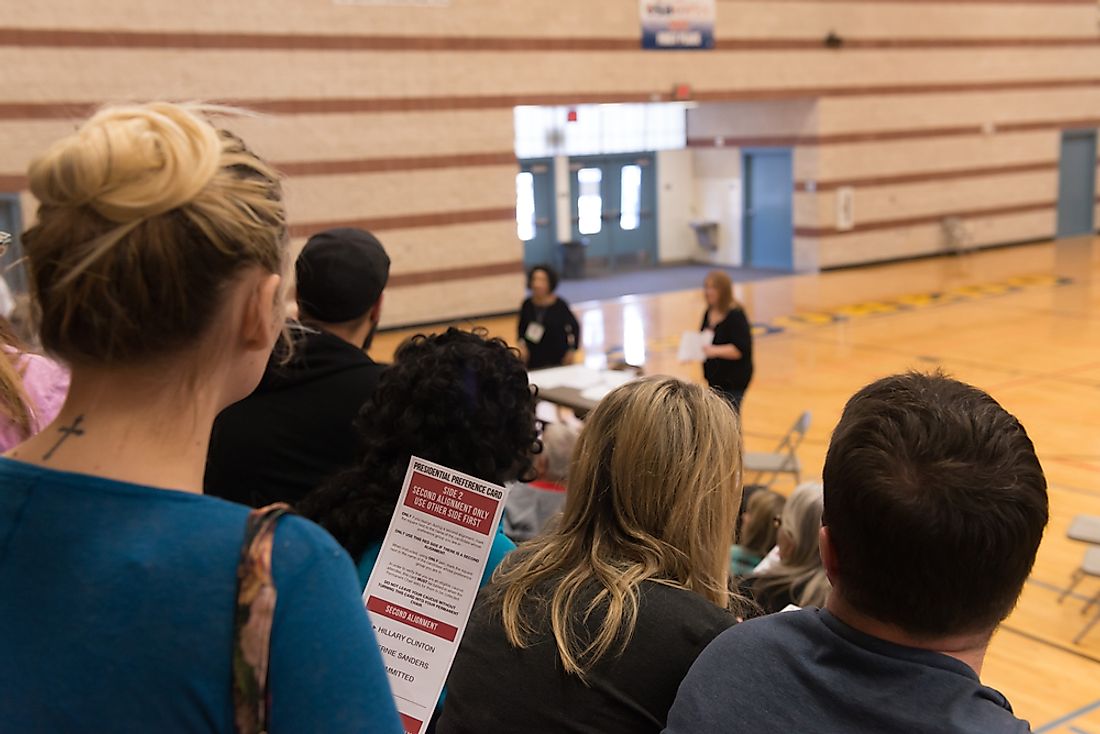What Is the Difference Between a Primary and a Caucus?

Caucuses and primaries are the primary methods the Democrats and Republican parties use to select their delegates who will take part in the party’s respective national conventions. The delegates choose the party's nominees for the presidential seat at the national conference. Before the 1960s and 70s, the majority of the states selected their delegates through caucuses only since they were straightforward.
What Are Primaries?
Primaries provide a straightforward method of selecting delegates for the national convention. During the primaries, all the registered voters from both parties vote for their candidates on the primary-ballots. Just like in the general elections, the primaries take place in an assigned place and day. Primaries voting are also anonymous and private. As per the state’s rules, all the delegates are allocated to the winning candidate (winner-take-all primary), or they are distributed as per the votes received during the primaries also known as proportional primary.
What Are Caucuses?
In the past, caucuses were held after every two years and the party members met and discussed numerous issues affecting the parties and how they will improve their political platform both on the national and state level. Compared to primaries, caucuses are not as straightforward, in fact, they are not selecting the presidential race candidate alone.
Modern Primaries and Caucuses
Since all the parties started nominating their presidential candidate during the national convention as early as the 19th century, the caucus process has not changed. In most states, the voter in every local precinct gathers in different places including the gym, basement, and bars to discuss the presidential elections and to vote for their preferred candidates. During these gatherings, supporters talk on behalf of their favorite candidates with their primary goal being swaying most of the undecided voters in the event. Caucuses are held at any given time of the day when the locals can vote which is not the case with primaries. A caucus does not have official voting ballots, and in most cases, the organizers ask the locals to divide into groups as per the candidates or just raise their hands.
The results of the caucuses does not affect the number of delegates sent to the national convention. All the delegates are selected through a month-long multistage process, but in some states, the local caucuses help distribute delegates for their county-level conference. Each political party has its own rules when it comes to delegate’s distribution and whether it is mandatory for the voters should cast their votes at every stage.
While the republicans use secret ballots, the Democrats prefer voting publicly in a very unusual method. During the democrat's primaries, every candidate must get the support at least 15% of the voters present. If he/she gets less than 15%, the voters are then allowed to select another candidate. The primaries are way more common and done in most of the states. During the primaries, voters cast their votes in the ballots at the polls.
There are different types of primaries which vary between parties and states. In closed primaries, only the registered members of the party can vote while the semi-closed involves both unregistered and registered voters. In open primaries, all the registered voters participate in the polls while in semi-open the voters participating must ask for their party’s ballot. After the caucuses and the primaries end, all the selected delegates go to the National conventions.







